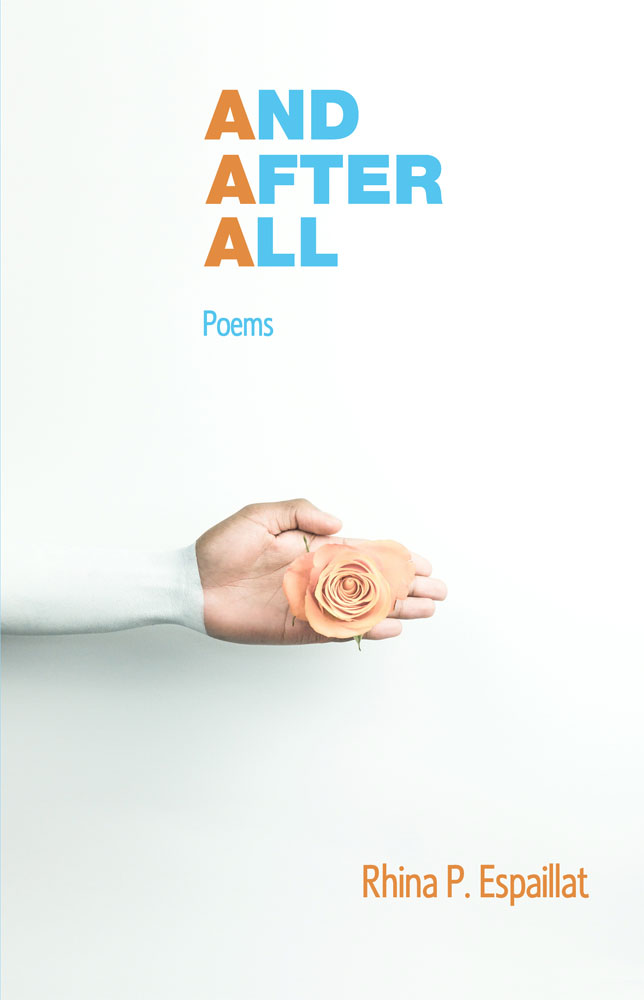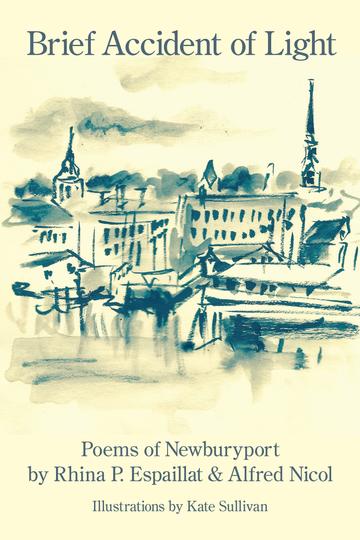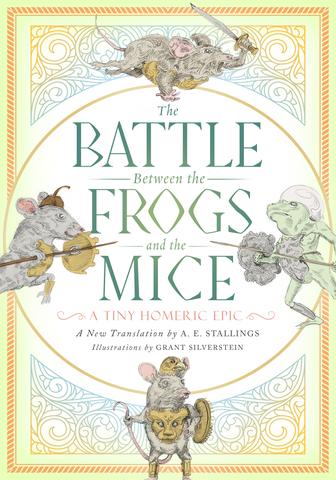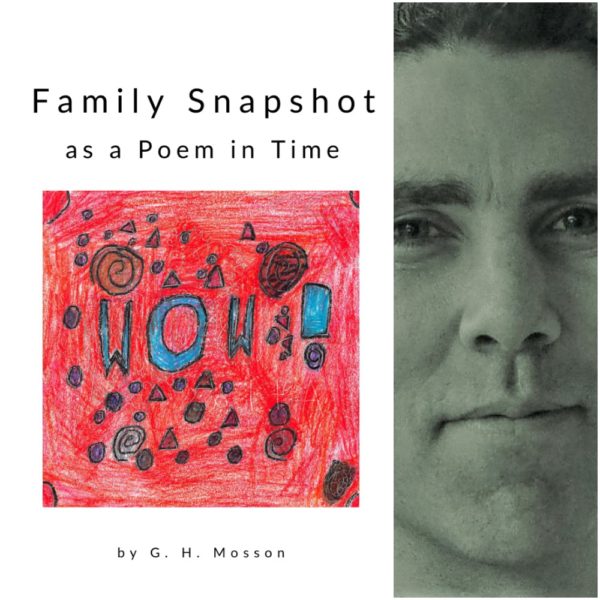If you have a book you’d like considered for a review in Light—one that includes a large helping of light verse and was published within the previous 12 months, or will be published in the next six—please send a copy to:
Barbara Egel
PO Box 408250
Chicago, IL 60640-0005
(Pre-print-run electronic copies may be sent to lightpoetryreviews@gmail.com)
Light on Their Feet
(Reviews of books by Rhina P. Espaillat, Alfred Nicol, G.H. Mosson, and A.E. Stallings)
by Barbara Egel
And After All, by Rhina P. Espaillat. Able Muse Press, 2019
Rhina Espaillat’s newest book defies critics in all sorts of ways, but it particularly confounds the light verse critic (this one, anyway) in that it’s often hard to separate the light from the serious. Even in serious—or truly sad—poems, Espaillat’s voice has a twist of wry, like the tang of lemon zest at the edge of whatever other flavor dominates. At the same time, the poems that feel light because of a rollicking meter or a clearly humorous approach sometimes mix in a little anxiety, as in “Are You Sure That You Want to Exist?” which starts with the misreading of a Microsoft Word pop-up box and ends with an existential cri de coeur.
Or perhaps it’s more accurate to say that some of the “light” poems leave the reader feeling a bit naked. Espaillat neatly and efficiently exposes that thing you’ve feared for a long time—and actually felt a little ashamed of fearing. In “Confession,” the speaker beweeps her thinning hair: “More, each day, / cleaves to the brush, forsakes the head” is a lamentation, but by the end, she concedes, “I’m ashamed to be caught weeping / over such paltry stuff as curls.” Her vanity is ours, and her admission of it makes us blush. In “Observation,” which addresses the deep-seated and very human fear of living among objects that, in certain lights, appear to hold ominous secrets, she addresses the shock of looking at anything “Perceived in space too bright, too clear.” Rhina Espaillat has given us an entire book of poems that shine that disconcerting light.
It’s safe to say that Espaillat, however her subject matter may be primed for it, dodges sentimentality at every turn. In the first section of the book, “Things That Go,” Espaillat has fun with several poems about the children in her life, and while the poems are endlessly affectionate, their specificity keeps them far from melting into mush. In “The Wolf,” a new spin on “The Three Little Pigs,” a little boy learns the double-edged benefit of giving in to fear before the end of the story. And how can one resist a poem called “Dying Huge Dragon,” which perfects the refrigerator-art ekphrastic?
Also among the lightly-serious or seriously-light are poems that suggest Espaillat is never not writing a poem. So many stray observations—that an occupied hammock resembles a parenthesis on its side, that the Little Red Hen was “ethical but unsaintly”—amuse a lot and disturb a little. “Bridges” starts with the kind found on guitars, goes through the architectural structures and the card game, and ends up, denturally, in a glass by one’s bed. And Espaillat’s language picks up the flavor of light verse when it needs to. “Choosing a Seat” examines all the physical and psychic consequences of sitting backward or sideways on a train, deciding that a bend in the track “lopsides” one’s view. “Lopside” as a verb is something everyone should begin to use immediately.
The book’s final section is elegiac. It begins quietly with several gorgeous sonnets to missing friends and then presents a passionate but beautifully dry-eyed series of poems about the loss of a mate of several decades. Even here, the flavor is less of regret, lamentation, or self-pity than it is of careful observation. After a few readings, one feels as though the ageless poet with the long memory is in a sort of conversation with the aging woman speaker, and the poet finds in the woman’s concerns both justified pain and a little human folly. It’s an incredibly humane and honest way to mourn.
In Rhina Espaillat’s book-long dialogue of self and soul, there is bright beauty and deep feeling, much to make you snicker, and more to make you think.
Brief Accident of Light: Poems of Newburyport, by Rhina P. Espaillat and Alfred Nicol, illustrated by Kate Sullivan. Kelsay Books, 2019
While we’re on the subject of the prolific Rhina Espaillat, her book with Alfred Nicol is both a volume of lovely poems and an interesting experiment in poetic convergence and divergence. As the note at the front tells us, the two poets were invited to observe specific places in their town in Massachusetts at specific times of day and then write about what they saw. The two made their pilgrimages to these sites together, which allows us to experience the same moment twice. Sometimes, as in their pieces about the commuter rail station during a weekday rush hour, identical details—such as the young skateboarder—find their way into very different poems. Other times, the poems seem almost like a dialogue, as when the poets describe a Plum Island dawn. While each poem is a whole, both together provide a richer picture.
Nicol and Espaillat are Light contributors, and though their voices are compatible, their senses of humor contrast nicely. While Espaillat chuckles happily and melodically in some of her poems, Nicol seems to issue a sort of delighted yawp at the absurd amazingness of it all. In his “The Youngest Actors Take the Stage,” written about a playground in late morning, he calls to mind ee cummings’s “[in Just-]” while also inventing a form with great potential: the short last line of each tercet becomes the first part of the first line of the next tercet:
Cleopatra in her golden sandals
clambers up the pyramid to spy
on Mark and Toni,
while Mark and Toni, off like Roman candles,
chase another youngster whizzing by—
Oh that one rides a pony!
No, that one is a pony! And this one’s wild
to press a fountain back with her bare hands.
Good luck with that!
The Battle Between the Frogs and the Mice: A Tiny Homeric Epic, translated by A. E. Stallings, illustrated by Grant Silverstein. Paul Dry Books, 2019
In the great tradition of Stuart Little and Ben and Me, a work of staggering murine ambition has been unearthed, this time by A. E. Stallings. In her introductory note, Stallings gives full credit to one A. Nony Mouse for his translation and annotation of this ancient Greek epic. Mr. Mouse then provides a long introductory essay on the history and scholarship surrounding the poem he has so painstakingly translated (and with such a small pen!), an essay that decries previous human failures to even consider attributing The Battle Between the Frogs and the Mice to a rodent bard.
The battle begins in Aesopian style with a frog luring a mouse to its death. (Was it deliberate? You decide.) The subsequent outcry leads to all-out war, albeit a tiny one. Those familiar with the Iliad will thrill at its miniaturization. The names of the heroes (King Pufferthroat begins the plot, and one whiskered Morselsnatcher is its fiercest fighter), the armor and armaments (chickpea shells for helmets and bean pods for shin protection, spears made of rushes), and the inevitable interference of the gods are all present and adorably parallel with expectations. It even ends with a crustaceus ex machina you will not expect.
Of course, because this is Stallings, the translation is in tight rhymed verse that balances both the grandeur of epic and the particular qualities of the warriors. As a result, what might have been a folly ends up being wonderfully affecting (in fact, maybe too affecting for really little lovers of storybooks) as when the valiant Nibbleman takes a spear through his liver, and “soft fur and armor both lay in the mud.” Was Hector’s death so poignant?
The illustrations by Grant Silverstein maintain this balance, taking the combatants seriously (or as seriously as one can take the skinny legs of a standing frog wielding a beet leaf for a shield) and conveying the intensity of the battle. Also, in addition to the illustrated version, there is an annotated printing of the poem at the back complete with endnotes for those more likely to write about it than reenact it with sofa cushions.
One does hope that someday, a determined web-footed scholar unearths the frogs’ account of this ancient conflict–an amphibious Aeneid, if you will. Would Charon be paid if our hero could just hop across Acheron?
Family Snapshot as a Poem in Time, by G. H. Mosson. Finishing Line Press, 2019
The titular first part of this book is a reflection on fatherhood. In poems that use blackout and annotation to varying degrees, Mosson’s overt awareness of the effect of confession and ellipsis will interest readers fascinated with experiment.
In its second part, “Peek-a-Boo Moon & Other Poems,” the book shifts from sober consideration to nostalgia for parenthood’s sweetest duty: seeing a child safely and happily off to sleep. Often told from the point of view of that safe and sleepy child, the poems call to mind both Margaret Wise Brown and Emily Dickinson. More sophisticated than nursery rhymes but sonorously lulling, these poems used as bedtime reading will inspire heavy eyelids and intrigue the grown-up reader. In “Chasing the Moon,” the speaker searches for the moon in the sky:
Through gold lagoons
where cloudlets bronze and laze
in dusk’s perfume,
you sneak and hide. We seek!




